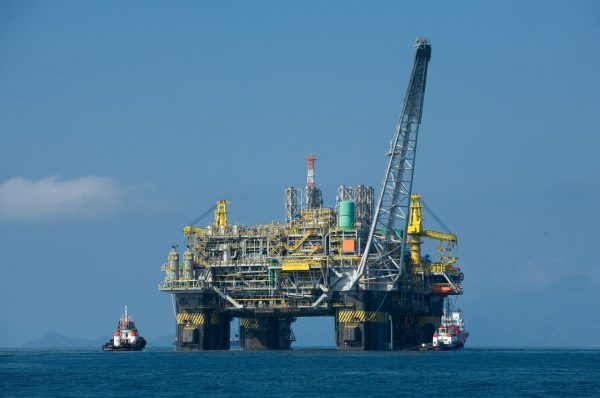
Nigeria’s rig count declined by three last December, 2019, having recorded 17 as against 20 recorded in November, at a time the Organisation of Petroleum Exporting Countries, OPEC, had an impressive plus 12, while world rig count increased by one, latest data from OPEC shows.
Following Nigeria in the loser’s group among the 14 – member OPEC is Ecuador, which had minus two, having recorded five in December as against seven recorded in November.
Five OPEC members made the gainers’ group. Saudi Arabia led the group with eight, as it witnessed 115 in December as against 107 witnessed the previous month. It was followed by Algeria, which had plus three, having made it 42 in December, as against 39 witnessed the previous month. The United Arab Emirates (UAE), Angola and Kuwait made plus two each.
UAE’s record showed 66 in December, as against 64 the previous month, while Angola’s record showed five as against three within the period under review. Kuwait had a record of 50 in December, as against 48 recorded in November. Seven other OPEC members had their rig count unchanged within the period under review. They include Congo, Equatorial Guinea, Gabon, Iran, Iraq, Libya and Venezuela, which 2, 1, 9, 157, 77, 16 and 25, respectively. World rig count as at December stood at 2,201 as against 2,200 recorded in November.

The United States of America recorded had minus six, having recorded 805, as against 811 recorded within the period under review, just as Canada recorded minus one, having recorded 135, as against 136 recorded within the period under review. Similarly, Mexico had minus one, as it recorded 49, as against 50 recorded within the period under review.
The Organisation for Economic Co-operation and Development, OECD Americas and OECD Europe had their rig counts reduced by eight. While OECD Americas had 989, as against 997, OECD Europe had 139, as against 147 within the period under review. The United Kingdom had minus three, as it recorded 11 in December, as against 14 recorded in November, while Norway had its rig count reduced by one, having recorded 17, as against 18 within the period under review.
The OPEC data also showed that non-OPEC oil supply growth estimate for 2019 was revised up by 0.04 million barrels daily, mb/d from the previous monthly oil market report, MOMR and is now estimated at 1.86 mb/d, to average 64.34 mb/d.
The upward revisions to production data from the US, Norway, Australia, Indonesia, Thailand, Argentina and Brazil were partially offset by minor downward production adjustments in the UK, Denmark, India, Qatar, and Ghana. US liquids output year – on – year, y-o-y growth was revised up to average 1.66 mb/d.
The US, Brazil, China, Canada, Russia, Australia and the UK are estimated to have been the key drivers of growth in 2019, while Mexico and Norway have seen the largest declines.
The non-OPEC oil supply growth forecast for 2020 was also revised up by 0.18 mb/d from last month’s assessment and is projected to grow by 2.35 mb/d to average 66.68 mb/d. Large upward revisions in Norway, Mexico and Guyana’s oil supply forecast are partially offset by downward revisions in the supply forecast of the US, other OECD Europe, and the Sudans.
US oil supply growth forecast for the current year was revised down by 76 thousand barrels per day, tb/d, to represent y-o-y growth of 1.43 mb/d.
The US, Norway, Brazil, Canada, Guyana, and Australia are expected to be the main growth drivers in 2020, while Indonesia, Thailand, Egypt and Colombia are forecast to see the largest declines.
In 2020, OPEC Natural gas liquids, NGLs are forecast to grow by 0.03 mb/d y-o-y to average 4.83 mb/d. In December, OPEC crude oil production fell by 161 tb/d m-o-m to average 29.44 mb/d, according to secondary sources.
As a result, preliminary data indicates that global oil supply decreased in December by 0.06 mb/d m-o-m to average 100.28 mb/d, and down by 0.61 mb/d y-o-y. Global oil supply in 2019 declined by 0.10 mb/d compared to 2018.
OPEC crude oil production in 2019 declined by 2.0 mb compared to a year earlier. With non-OPEC supply growth at 1.86 mb/d, if there had not been an agreement between OPEC and 10 non-OPEC countries, the market would be considerably oversupplied in 2019, the data stated.
 MMS PLUS NG – Maritime, Aviation, Business, Oil and Gas News Online Newspaper with coverage in Maritime, Oil and Gas, Aviation, Power and Energy as well as Financial News
MMS PLUS NG – Maritime, Aviation, Business, Oil and Gas News Online Newspaper with coverage in Maritime, Oil and Gas, Aviation, Power and Energy as well as Financial News









